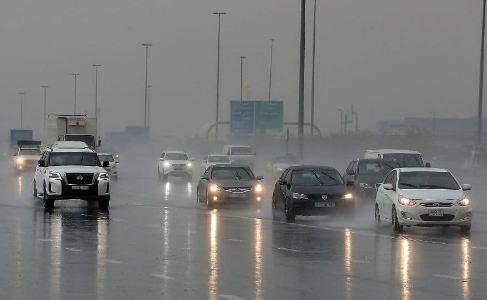The twin tragedies that struck Islamabad on July 21 and 22, 2025, underscore a troubling reality about the state of urban planning and infrastructure resilience in Pakistan’s capital city. What should have been a brief monsoon episode turned into a nightmare for many, with water gushing down the Margalla Hills and nearly submerging Saidpur Village—a heritage and tourism site recently rejuvenated with the generous support of the Azerbaijan government. The following day, a retired colonel and his 25-year-old daughter were tragically swept away by floodwaters in DHA Phase 5, a locality reputed for its safety and superior planning. Both incidents expose not only systemic infrastructural vulnerabilities but also institutional apathy that repeatedly turns natural events into human disasters.
Saidpur Village has long been celebrated as a picturesque tourist attraction tucked into the Margalla foothills. The village, with its centuries-old charm, was recently beautified with major investments by the Embassy of Azerbaijan, transforming it into a cultural gem that attracted locals and foreigners alike. But on July 21, nature exposed the dangers lurking beneath this aesthetic veneer. A sudden influx of rainwater from the Margalla Hills turned the narrow nullah (stormwater drain) running through Saidpur into a raging stream. Due to severe encroachments and unregulated construction along the nullah’s banks, the water had nowhere to go. The result was near-inundation of the village, massive property damage, and an ugly blot on a site that had just been given a new lease on life.
While it’s fortunate that no lives were lost in Saidpur, the damage to property and to the village’s hard-earned reputation as a model tourism destination cannot be ignored. What makes this situation particularly alarming is how preventable it was. Over the years, illegal constructions have gradually shrunk the size and capacity of the nullah. The lack of regulation, compounded by the city’s expansionist mindset, has led to the erosion of natural water pathways—an issue that plagues not just Saidpur but many other parts of Islamabad.
If the Saidpur flooding was a warning, the very next day brought outright tragedy. A retired colonel and his young daughter lost their lives when their vehicle was swept away by floodwaters in DHA Phase 5, an area believed to embody the highest standards of modern, secure living. That such an incident could occur in DHA—a flagship project of the Pakistan Army—has shocked many and demolished the myth of flawless planning in gated communities.
DHA housing schemes are marketed as self-contained cities, immune from the chaos and hazards of unregulated urban sprawl. Yet the July 22 tragedy reveals that even these communities are not immune to nature’s fury, particularly when urban planning fails to account for adequate stormwater management. While questions abound about the cause and precise circumstances of the incident, the broader issue remains: Why are our cities—planned or otherwise—so vulnerable to seasonal rainfall?
On paper, Islamabad has all the ingredients of an ideal city—green zones, master plans, protected forest areas, and an elite civic administration. In reality, the governance has become reactive, not proactive. Prime Minister Shehbaz Sharif has been holding daily meetings, requesting updates, and issuing directives. Yet, beyond the ceremonial optics, there’s no evidence of any long-term planning or urgency in disaster preparedness.
Whenever calamity strikes, a predictable cycle follows: a flurry of official meetings, sweeping announcements, and brief media attention. But as soon as the skies clear, so does the resolve to address the root causes. This short-sighted approach must end. Seasonal rains are not a new or surprising phenomenon. What’s new—and deeply troubling—is the extent to which natural waterways have been encroached upon or obstructed, turning regular monsoon events into annual disasters.
The July rain events must serve as a wake-up call for policymakers, urban planners, and citizens alike. There are immediate and long-term steps that need urgent attention: In Saidpur Village, the nullah must be restored to its original size and capacity. All illegal encroachments along the banks must be identified and removed without delay, regardless of the influence or identity of the encroachers.
Islamabad must be mapped comprehensively for flood-prone zones. Water drainage systems across the city, especially in housing societies like DHA, must be upgraded to withstand heavy downpours.
There needs to be a strong campaign to educate residents on flood risks, safe driving in rain, and emergency response. Civic responsibility must be cultivated alongside governmental responsibility. The government should establish permanent, well-resourced disaster response cells for all major urban centers—tasked not just with emergency management but with year-round monitoring and mitigation.
Urbanization is not inherently dangerous. What makes it catastrophic is the lack of foresight, weak regulation, and absence of environmental respect in city planning. Islamabad, once envisioned as a green, serene, and orderly capital, is slowly morphing into another casualty of unchecked development and bureaucratic indifference.
Both the Saidpur flooding and the DHA tragedy are not just isolated incidents—they are symptoms of a deeper rot. Unless we treat them as calls to action, the cost next time may be even higher.
It’s not enough for the Prime Minister to take daily updates. It’s time for real, structural change—before another storm becomes another headline, and more lives are lost while we wait for governance to catch up with the weather.

















